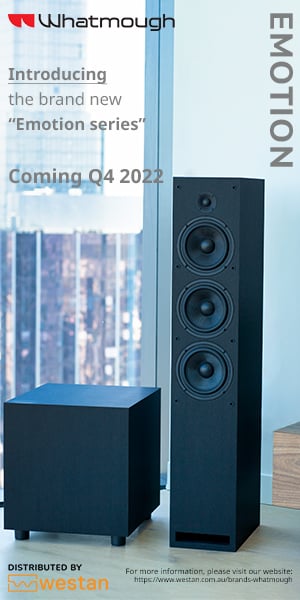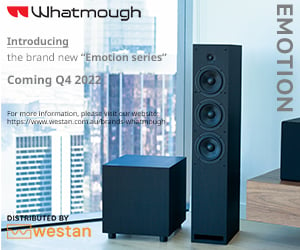A new finding has shed light on the retail activities and trends among consumers and businesses that within Australia.
The Future of Retail: A Roy Morgan Business Address has outlined a number of factors in play within the country’s retail sector including how Australians are adjusting their spending, which are the growth avenues and the retailers which are getting their strategies right.
One of the key findings that have emerged indicate that consumers are spending less on some categories, led by home electronics. Spending on home electronics (-21 per cent on a year ago), baby and nursery products (-21 per cent), home décor (-14 per cent), footwear (-13 per cent), sporting equipment (-11 per cent), personal entertainment (10 per cent), computers and tablets (-9 per cent), computer accessories and software (-8 per cent), large electrical goods (-8 per cent) cards and stationery (-6 per cent), homewares (-6 per cent), clothing (-5 per cent) and manchester (-5%) have all demonstrated a decline in the amount consumers spend on them.
However, consumers are spending more than they were a year ago on certain other categories. These include pet supplies (+13 per cent), gaming (+12 per cent), cosmetics (+9 per cent), perfume or aftershave (+8 per cent), skin care products (+7 per cent), phone and accessories (+5 per cent), accessories for men, women or children (+5 per cent), games or toys (+5 per cent), small electrical goods (+3 per cent), crafts or hobbies (+2 per cent) and books (+1 per cent).
The country’s population growth is what the Roy Morgan says is helping keep Australia out of a recession. Australia’s population has soared at a record rate over the last year with its population growing by over 650,000 in the year to September 2023 – an annual growth of 2.5 per cent – the highest since the post-War boom. Over 80 per cent of this growth is driven by net immigration which was 548,800 people over the last 12 months. The rate of population growth has exceeded the annual rate of growth in retail sales since June 2023.
The ‘cost-of-living’ crisis is not being felt by everyone – but young families are bearing the brunt of rising prices and high inflation. Annual consumer spending for the 4.3 million people in young families with children aged under 16 is down 15 per cent over a year ago. For those aged 25-34 (many of the same people), spending is down 16 per cent from a year ago.
In contrast there has been an increase in consumer spending of 10 per cent for people aged 14-24 and smaller increases for those aged over 50. Homeowners, who comprise around a third of all Australians, have also increased their spending power over the last year.
Online retail
In the year to March 2024 there was around A$60 billion spent online (non-food categories), and despite a flat retail market, overall spending in the six months to March 2024 was almost A$32 billion – up 12 per cent on the six months to September 2023 (A$28 billion). Online-only retailers Amazon, Shein and Temu are disrupting Aussie retail to the tune of A$8 billion. Amazon has doubled its customer base in three years to 3.4 million monthly shoppers after entering the Australian market fully in 2017 and since then has taken off with over 15 per cent of Australians now shopping at Amazon in a month – almost doubling from early 2021. Amazon’s annual sales have hit an estimated A$5.6 billion – around a tenth of all dollars spent online.
Over 2 million Australians shop at Temu or Shein each month. The new entrants to the Australian online shopping experience, Temu and Shein are already reaching millions of Australians. Over 1.4 million now shop at Temu in an average month spending an estimated A$1.4 billion annually and around 800,000 shop at Shein with an estimated annual spend of A$1 billion.
Women’s clothing is the top category at Shein with over 700,000 customers in an average four weeks – over seven times second placed men’s clothing (92,000). In comparison, Temu has a wider variety of categories led by women’s clothing (537,000 customers in an average four weeks), accessories for men, women or children (286,000), men’s clothing (212,000) and electrical goods (180,000).

Trends in retail
Over 12 million Australians are buying second-hand items and almost as many sell second-hand items. Fifty-seven per cent of Australians (12.2 million) buy second-hand items while almost as many, 44 per cent (9.3 million), sell items no longer wanted. Over a third of Australians (34 per cent, 7.3 million), both buy and sell items.
Two-thirds of second-hand shoppers (67 per cent) cite buying good quality items at much cheaper prices as a motivation to shop second-hand while nearly a third, 29 per cent, do so because it is sustainable. The rising cost-of-living is also having an impact with 10 per cent buying second-hand due to affordability concerns.
The latest Roy Morgan ‘Most Trusted Brand’ rankings show retailers dominating the top ten rankings filling nine out of the top ten spots. The usual favourites are clustered in the top five including Australia’s ‘Most Trusted Brand’ Bunnings and followed by the big supermarkets Woolworths, ALDI and Coles – although the supermarkets have lost ground recently. Also in the top ten are Kmart, Myer and Big W.
However, online retailers fill five of the top six positions as the ‘Most Distrusted’ retailers despite their impressive growth in recent years. The most distrusted retailer is Amazon, followed by furniture and electrical giant Harvey Norman and new entrants Shein and Temu with Wish and Kogan filling out the top six.
Roy Morgan’s monthly Retail Sales forecasts are cautious in its outlook for the remainder of the year with projected retail sales growth of only 1.2 per cent for the full year – below the rate of population growth (+2.5 per cent) and below the usual rate of annual retail growth of 3-4 per cent.
Retail sales of Food (+1.8 per cent to A$171.2 billion) are expected to be twice as fast as non-food (+0.9 per cent to A$258.8 billion).
Laura Demasi, Roy Morgan’s Retail, Social and Consumer Trends Expert, said, “There are still significant cohorts in the Australian population with plenty of spending of power – those unaffected by interest rate rises and those with the income and wealth buffers to absorb the increases. The ‘cost-of-living crunch’ has also created the perfect storm for the rise of surprise winners in this environment – online marketplaces Amazon, Shein and Temu who together have helped drive a rise in spending online in the last six months and are disrupting retail to the tune of $8 billion in annual sales.”














































